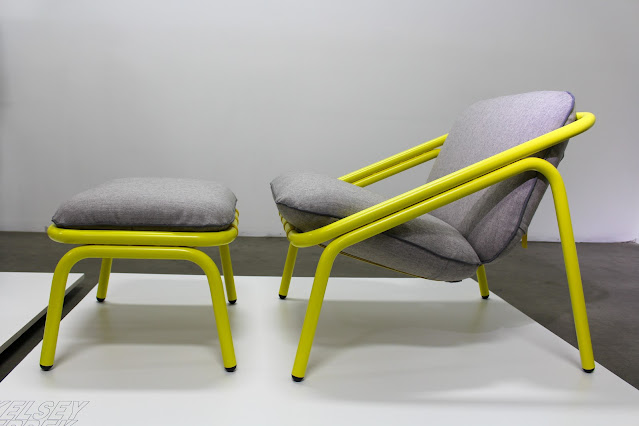The Successful Design Business Practices of Walter Dorwin Teague
Part
1 of 5
 |
| Walter Dorwin Teague on Madison Avenue (Teague archives) |
Walter Dorwin Teague (1883 - 1960) is
considered one of the founding fathers of industrial design as well as one of
the most prolific American industrial designers in history. Among his contemporaries, Henry Dreyfuss,
Norman Bel Geddes, and Raymond Loewy, he stands out as a professional leader
and influential businessman. His clients
were the largest and most prominent corporations in the United States.
From the start of
his industrial design business in 1928 the office grew from a staff of two to
fifty-five by 1938, which included architects, engineers, accountants, model
makers, and industrial designers. (Teague, W. D. Jr. 52) At this time his client list included: Ford,
Texaco, US Steel, DuPont, National Cash Register, Eastman-Kodak, Steinway and
Sons, A.B. Dick, Consolidated Edison, and New Haven Railroad among others. Teague maintained long relationships with
these clients, some spanning over 20 years, designing iconic products,
buildings and exhibits for over 3 generations.
Says partner Stowe Myers: “By
this time [1940], Walter Dorwin Teague’s prestige at the top of his profession
was well established.” (Myers) He later expanded
his firm to offices in Los Angeles and Seattle, and today his prestigious
design firm continues to thrive 84 years later.
Industrial design
principals and consultants today can learn from how Teague ran his design
business, how he dealt with clients, how he approached projects, and how he
treated his staff. This article intends to reveal these century old lessons from
the grandfather and “the Dean” of industrial design.
 |
| A Packard Ad designed and illustrated by Teague in 1915 (Hornung) |
Learning
from the Business of Advertising
Before transforming
into an industrial designer, Teague had been doing advertising art
illustrations for over 20 years. He took
night classes at the Art Students League in New York City, and was an extremely
talented illustrator. He worked with the
advertising agency Calkins-Holden as an illustrator and typographer. This is where he learned how to do business
with prominent clients. Earnest Calkins
was an advocate of using form, visualization, design and art to modern
advertising, and wrote what is considered the first textbook of the field, Modern Advertising. Ralph Holden was
experienced at bringing in new clients, forming relationships and holding onto
them.
Calkins and Holden
became very successful with a number of high-profile clients including:
Pierce-Arrow, H.J. Heinz, Ingersoll Watch, Thomas A. Edison Industries,
Beech-Nut, and E. R. Squibb. Teague
learned how to nurture relationships with prominent clients through Ralph
Holden and how to demonstrate the value of their work through sales figures
before and after an ad was published.
Here Teague learned to have the experience and social tact for dealing
with the clients that he was targeting.
“The value of this
association was only equaled by the experience of observing at first hand the
methods of Earnest Elmo Calkins and Ralph Holden, whose high ethical and
professional standards have never been surpassed, he thinks, in his
experience.” (WDTA)
Teague’s value proposition to his clients was simple and effective. That industrial design will improve their
products appearance, function, sales, and potentially reduce manufacturing
costs and strengthen the company’s brand.
Being a student of the advertising firm, he would produce case-studies
of before-and-after sales figures, with which he could justify the cost of his
services and clearly present the potential value.
Coming up next: How did the early industrial designers sell themselves to new clients?
Works Cited
Myers,
Stowe. "Living Legend of Industrial Design: Stowe Myers." Living
Legends Meeting, Association of Professional Design Firms. Whitehall Hotel,
Chicago. 5 June 1987. Speech, Audio Recording.
Teague, W.
Dorwin Jr. Industrial Designer: the Artist as Engineer. Lancaster, PA: Armstrong World Industries, 1998. Print.
WDTA. Walter D.
Teague Biographical Notes. New
York. 1951. Print,
Teague Archives.
Hornung, Clarence P., Advertising Designs of Walter Dorwin Teague. Art Direction Book Co. 1991.



Comments